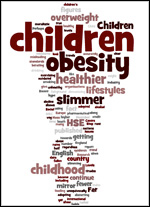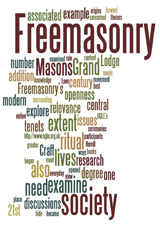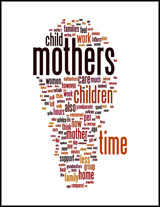Code of Practice / Guidelines on Science and Health Communication.
Prepared by the Social Issues Research Centre in partnership with the Royal Institution – Sept 2000
Draft Guidelines for Journalists and Broadcasters
The aim of the guidelines for journalists outlined below is to 'unpack' the broad principles contained in existing Codes of Practice such as those of the Press Complaints Commission and those guidelines which apply in the broadcast media. In particular, guidance is provided on the interpretation of notions such as 'accuracy', 'fair representation', 'misleading' etc. in the context of health and science reporting.
We will take it as read that journalists and broadcasters will strive to ensure that all reports of scientific studies are accurate in the sense that the details of studies and specific findings are reported faithfully. This, however, will not eliminate the risk of a report being misleading. It is in the interpretation of the findings and in generalisations made from limited data that misrepresentations are most likely to arise.
While no guidelines or codes of practice can ever ensure error-free copy, we hope that the following may increase accuracy and reduce misrepresentation and distortion:
1) Credibility of source
The peer review process of leading scientific and health journals ensures (with a few notable exceptions) that the quality of the investigation is such that it is worthy of consideration by the wider community. Journalists and broadcasters should, therefore, establish if the work has been assessed in this way and make clear occasions when it has not.
The reputation of the institute or academic department in which the investigation has taken place and the professional qualifications and previous track record of the investigators should be considered. Where the authors of a study appear to have no previous publications in relevant areas, or are from institutions not normally associated with excellence in the particular field, this should be noted.
The good reputation or excellent qualifications of the source, however, do not guarantee that the findings are either definitive or significant in terms of, say, public health concerns. A reputable author should not attempt to exaggerate the importance of a study.
Known affiliations or interests of the investigators should be clearly stated. This applies not only to researchers who are attached to, or funded by, companies and trade organisations but also to those who have known sympathies with particular consumer pressure groups or charitable organisations. It should be recognised, however, that a particular affiliation does not rule out the potential for objectivity. All scientists are paid by somebody.
The credentials of investigators should, where appropriate, be further assessed by consultation with other scientists in the relevant field. The establishment of 'expert cotacts' database of independent scientists (see section 9) in a wide range of disciplines will aid this process considerably.
2) Credibility of procedures and methods
While the peer review process aims to weed out reports of studies which are seriously flawed, unpublished work, conference papers or research reported in lesser-known journals may contain errors in terms of design, execution and analysis. The absence of appropriate control samples, for example, may lead to a questioning of the results. In most cases, however, the identification of such flaws requires specialist knowledge and research experience. Consultation with an 'expert contact' (see section 9) may be useful in this context.
3) Credibility of findings and conclusions
While there are occasions in science and health research where sudden 'breakthroughs' or 'giant leaps' in knowledge occur, most progress is made by relatively minor developments from existing bodies of knowledge and theory. Studies which appear radically to challenge existing assumptions should be subjected to particular scrutiny. It is also essential that where controversial findings are being covered, the fact that they are at variance with previous knowledge should be stated early in the report – within the first few lines of a newspaper report or the air-time equivalent in broadcast news.
4) Communicating the significance of the findings.
The significance and implications of even credible studies may be open to a number of interpretations. This is particularly so when the findings:
- Are preliminary or inconclusive
- Differ markedly from findings of previous studies
- Appear to contradict mainstream scientific opinion on the subject
- Are based on small or unrepresentative samples
- Generalise to humans from animal studies
- Have found only a statistical correlation
In most cases, the authors of a journal paper will declare such limitations openly – usually noting the need for further research before definitive conclusions can be drawn. It is important that these limitations are reported fully in order not to misrepresent the views of the scientists involved. Where doubts exist about the frankness of the investigators in this respect, advice independent scientists should be sought.
The use of the term 'link' in media reporting can give rise to unjustified and misleading impressions. In many cases the existence of a statistical association between two variables is, in itself, insufficient to establish a causal connection. Phrases such as "Red meat found to cause cancer" should not be used in reporting studies which have identified an as yet unexplained correlation. Additional studies and the use of more sensitive statistical analyses are always required before a 'cause' can be effectively demonstrated (e.g. the systematic studies over the past decades on the causal links between smoking and lung cancer).
5) Communicating risks.
Many journal papers report changes in relative risks associated with a given variable. These are commonly expressed in percentage terms or odds ratios. Interpretation of these, however, can be very difficult. An increased risk of 30% of contracting a specific disease, for example, may seem quite significant. In fact, relative risks of less than 50% are rarely of any significance at all, other than in the purely statistical sense. There is also the need for any responsible journalist to cite the 'absolute risk' of the disease itself. If the disorder is quite rare, say 1 in 100,000 of the population, then the new risk of 1.3 in 100,000 may be judged accordingly. The same principle applies to so-called 'cures', where the real benefits may be smaller than the statistics might imply.
In all cases, however, we recommend the reporting of risks in comparative terms. Is, for example, the reported risk comparable with that of being struck by lightning, crossing the road, taking a bath or flying a hang-glider? (The availability of appropriate risk tables, currently being prepared by SIRC, will be of value in this context.) The aim of the journalist or broadcaster here must be to provide members of the public with accurate and meaningful information on the basis of which they can make informed decisions.
Further potential for distortion arises when studies have consistently failed to identify any evidence of risk associated with, say, a particular food ingredient. Confusion can occur in these cases because scientists are very reluctant, by virtue of their training and the canons of modern science, to declare that anything is ever 'safe'. Such a reluctance, however, should not be seen as a sign of equivocation. From a common sense point of view, situations in which there has never been any demonstrable risk are considered to be 'safe', even if scientists would rarely use that term themselves.
6) Anticipating the effects of reports.
There are numerous examples of press reports and broadcasts which, while following many of the recommendations above, have contributed to undesirable changes in the behaviour of readers and viewers.
The damage to public health from unfounded scares can be very serious. The 1995 'Pill Scare', for example, caused widespread panic, leading to thousands of unwanted pregnancies and over 29,000 abortions. The more recent MMR Vaccine scare has resulted in a drop in vaccination rates to below the level needed to prevent a measles epidemic. In both of these cases, the 'sources' must bear much of the responsibility, but more cautious media reporting (citing 'absolute' rather than 'relative' risks in the case of the Pill, and noting that the sources were speculating beyond the evidence of their published data in the case of MMR) could have significantly limited the damage.
While the harm and distress caused by reports of 'miracle cures' is more difficult to measure than that of unfounded scares, the raising of false hopes must be seen as equally irresponsible. We recommend that journalists and broadcasters should always communicate the limitations of any medical advance very early and prominently in their reports. For example, the fact that it will be at least X years before any drug/treatment/vaccine could be developed, or that a new drug is only effective in the early stages of a disease, should be clearly stated early in the report.
When in doubt, we recommend that journalists reporting medical advances should consider the effect of their report on a person suffering from the disease in question, or with a child/other relative/close friend affected by the disease. If there is a chance that the report will raise false hopes, it should be revised to avoid this. In the context of reporting on potential 'risks', the same principle should apply, in that journalists should carefully consider the damage to public health which can be caused by misleading reports.
7) The role of science editors and other specialists.
Most national newspapers, and a number of regional ones, and broadcast organisations, have specialist editors and correspondents whose role is to provide informed coverage of science and health issues. Their training and background, and their ability to communicate with other academics and professionals, should serve to minimise gross inaccuracy and misrepresentation in reporting of these issues.
As the Commons Select Committee have pointed out, however, these individuals, particularly in the print media, are sometimes 'sidelined' in the coverage of controversial issues such as GM foods.
While we recognise the right of newspaper editors to pursue their own agendas on such issues, and to conduct campaigns on behalf of their readers, there is an obligation to separate such editorialising from factual coverage. In order that reporting is fairly balanced, and seen to be so, we urge that contributions from the media's science and health specialists should be given sufficient prominence to enable readers to distinguish clearly between facts and opinions.
8) The role of sub-editors/headline-writers.
The obligation to avoid misleading or distorted reporting of science and health issues must extend to sub-editors and others responsible for writing headlines, captions and other highly visible material. The effect of a balanced, accurate and responsible article can easily be distorted by a misleading headline or photo caption. The use of qualifiers such as 'may', 'could', 'claims', 'possible', 'potential', etc., should be encouraged to avoid misleading the public on the health risks or benefits of any product or activity. The terms 'cause' and 'cure' should be reserved for use only when justified by the scientific evidence.
9) Expert contacts
A familiar comment from both print and broadcast journalists is that they work to strict deadlines and do not always have sufficient time to make all the required checks before covering health and science issues. While most of the science editors and correspondents have personal contacts in the academic world who they can consult, this is less frequently the case for staff and freelance reporters. It is also the case that many scientists are reluctant to talk to the media for a variety of reasons, including the fear that their comments may be misrepresented.
To overcome this problem there is a clear need for a central database or directory of 'expert contacts': scientists and health professionals who can offer impartial advice and opinions to journalists and broadcasters. In the social sciences, for example, the British Psychological Society has a press office which directs journalists to 'media-friendly' experts in particular fields.
It is not intended that these expert contacts should aim to maintain a narrow orthodoxy or try to dissuade journalists from reporting studies which might run counter to received wisdoms. Rather, by representing a broad cross-section of perspectives in the science and health worlds they should be seen as detached 'reviewers', able to communicate advice in lay terms.
The large majority of journalists now have access to the Internet and email facilities. We recommend, therefore, that the contact details and areas of expertise of of scientists and medical experts should be published on a web site. Access to this site would be limited to registered journalists with bona fide credentials.





